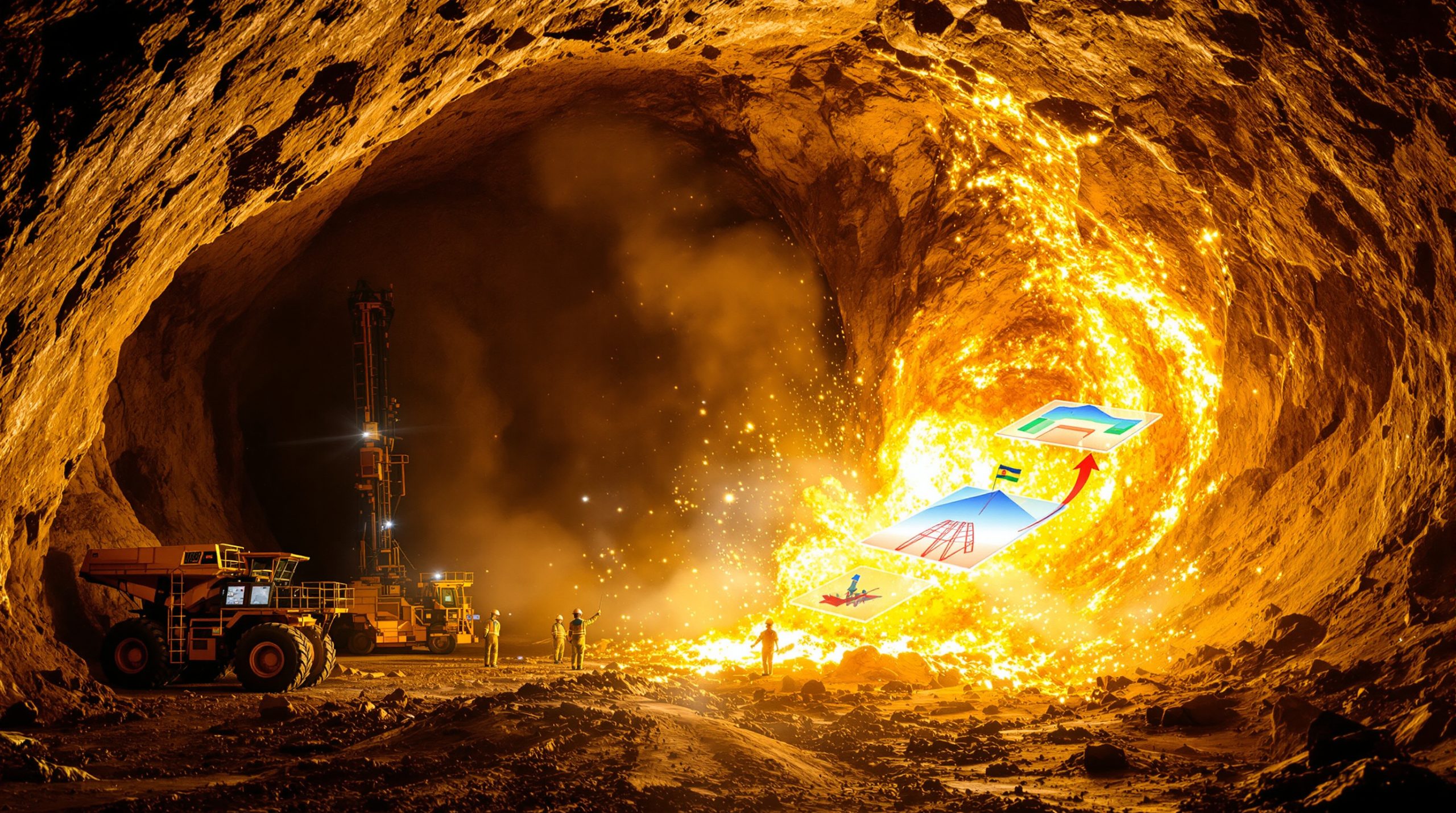The Strategic Significance of Browns Range Expanded Mining Lease Browns Range stands as one of Australia's most strategically significant rare earths developments, situated in Western Australia's East Kimberley region approximately 160km southeast of Halls Creek. This project has gained prominence for its focus on heavy rare earth elements, particularly dysprosium and terbium—critical components essential for manufacturing high-performance magnets used in electric vehicles, wind turbines, and other clean energy technologies. The recent expanded mining lease at Browns Range represents a pivotal development in Australia critical minerals reserve, potentially strengthening the nation's position in global rare earths supply chains amid increasing international competition and resource security concerns. How Significant is the Mining Lease Expansion? Doubling of Exploration Territory The newly granted mining lease (M80/650) replaces the previous M80/627 lease and dramatically increases the project's footprint from 4,923 hectares to 10,458 hectares—more than doubling the available exploration area. This substantial expansion incorporates existing exploration tenure that includes several priority targets already identified for near-term exploration activities. The expanded territory encompasses additional geological formations potentially containing significant rare earth deposits, which could substantially increase the project's resource estimates beyond current projections. This access to additional land could dramatically enhance the project's economic viability and long-term production capacity. Long-Term Operational Security The expanded mining lease at Browns Range provides Northern Minerals with operational security spanning over four decades, with an initial term of 21 years until September 2046 and provisions for an additional 21-year extension. This long-term horizon enables comprehensive project planning and phased development approaches that might not have been feasible under more limited lease arrangements. This extended timeframe allows Northern Minerals to: Develop a staged approach to resource exploration and extraction Invest in longer-term processing infrastructure Adapt to evolving market conditions and technological developments Build sustainable relationships with local communities and stakeholders Secure financing with the confidence of long-term operational rights Strategic Importance of Browns Range Critical Minerals Supply Security The Browns Range project directly addresses growing concerns about supply chain security for critical minerals energy transition. With global tensions affecting international trade and increasing demand for rare earths in defense and clean energy applications, domestic production capabilities have become a national priority for Australia and other Western nations. Northern Minerals' managing director Shane Hartwig has emphasized that "the global push to decarbonise is undeniable and irreversible, reinforcing the strategic value of projects like Browns Range to supply the raw materials that will enable energy transition." Dysprosium and Terbium Production Potential According to the project's definitive feasibility study, Browns Range is positioned to produce approximately 8% of current global supply of dysprosium and terbium when fully operational. These elements are among the most valuable and strategically important rare earth elements due to their essential role in permanent magnets and limited global production outside of dominant international suppliers. The significance of this production capacity becomes clear when considering the market dynamics: Element Primary Applications Current Market Dynamics Dysprosium EV motors, wind turbines, industrial motors Limited supply sources, growing demand from renewable energy sector Terbium Phosphors, permanent magnets, solid-state devices Highly concentrated production, critical for high-performance applications Economic Contribution Projections The project forecasts substantial economic returns, with average annual earnings before interest, taxes, depreciation, and amortization (EBITDA) projected at $175 million. This represents significant potential revenue generation for both the company and broader economic benefits through: Taxation revenue for government Employment opportunities in regional Australia Supply chain development for downstream processing Enhanced export earnings and trade balance improvement Skills development in advanced materials processing Production Capabilities and Technical Details Resource Estimates and Production Targets The current ore reserve estimate stands at 5.18 million tonnes at 0.88% total rare earth oxides (TREO), containing approximately 45,800 tonnes of TREO. When operational, the project aims to produce around 17,500 tonnes per annum of xenotime concentrate at approximately 25% TREO, yielding about 4,350 tonnes per annum of TREO. This production capacity is particularly significant given the project's focus on heavy rare earths rather than the more common light rare earths found in most global deposits. Processing and Refining Capabilities The Browns Range operation includes a pilot plant that has been instrumental in proving the project's technical viability. The expanded mining lease supports the potential for scaled-up processing facilities that could enhance Australia's domestic rare earths refining capabilities—a critical step in reducing dependence on overseas processing. The project's processing involves several complex stages: Conventional crushing and grinding circuits Gravity separation to produce xenotime pre-concentrate Magnetic separation and flotation processes Hydrometallurgical processing to separate individual rare earth elements Production of rare earth oxides or carbonate products Extraction Methodology The project employs both open pit and underground mining methods, with particular focus on the high-grade Wolverine deposit, which represents one of Australia's richest sources of dysprosium and terbium. The underground component utilizes sublevel caving techniques to maximize resource recovery while maintaining operational efficiency. This dual-method approach provides flexibility in targeting the highest-grade materials while managing operational costs effectively. Supporting Global Decarbonization Efforts Clean Energy Supply Chain Integration The rare earth elements produced at Browns Range directly support the manufacturing of technologies essential to global decarbonization efforts. The project's output will feed into supply chains for electric vehicles, wind turbines, and energy-efficient industrial motors—all critical components of the transition away from fossil fuels. These applications require the specific properties of heavy rare earths produced at Browns Range: Electric vehicles: Permanent magnets containing dysprosium and terbium enable more efficient and powerful motors Wind turbines: Direct-drive generators using rare earth magnets reduce maintenance requirements and increase efficiency Industrial motors: Energy-efficient designs reduce power consumption across manufacturing and infrastructure Reducing Carbon Footprint of Rare Earths Production By developing domestic production capabilities, the project potentially reduces the carbon footprint associated with rare earths supply chains. Local production eliminates long-distance shipping requirements and may employ more environmentally responsible extraction and processing methods compared to some international operations. Supporting Renewable Energy Deployment The permanent magnets manufactured using dysprosium and terbium from Browns Range will enable more efficient and powerful electric motors and generators, directly contributing to the performance and cost-effectiveness of renewable energy technologies and electric transportation systems. Environmental Context: Every tonne of rare earth materials produced domestically with responsible practices can reduce overall environmental impact compared to importing materials produced under less stringent environmental regulations. Challenges and Opportunities Ahead Market Competition and Price Volatility Despite its strategic importance, the project faces challenges related to rare earth market volatility and international competition. Price fluctuations for rare earth elements can significantly impact project economics, requiring robust financial planning and potentially government support to ensure long-term viability. Several factors contribute to this market volatility: Concentrated global production in a few countries Opaque pricing mechanisms Complex supply chains with multiple intermediaries Geopolitical tensions affecting trade policies Evolving technology needs changing demand patterns Technical Processing Challenges The extraction and separation of heavy rare earth elements present significant technical challenges. Ongoing research and development will be necessary to optimize processing efficiency and minimize environmental impacts associated with rare earth extraction and refinement. Key technical challenges include: Separating individual rare earth elements with similar chemical properties Managing radioactive elements sometimes associated with rare earth deposits Optimizing recovery rates while maintaining product purity Minimizing water usage and chemical consumption Managing waste streams effectively Expansion and Development Timeline With the expanded mining lease now secured, Northern Minerals faces the challenge of efficiently developing the additional territory while maintaining focus on bringing existing resources into production. Balancing exploration activities with development of proven reserves will be crucial for maximizing the project's potential. Future Directions for Browns Range Continued Exploration Activities Northern Minerals has indicated plans to undertake extensive exploration activities across the newly granted mining lease area. These efforts aim to identify additional rare earth deposits that could further enhance the project's resource base and extend its operational lifespan. Priority exploration targets include: Extensions of known mineralization zones Testing of satellite deposits with similar geological characteristics Deep drilling to assess underground potential Systematic evaluation of the newly acquired lease areas Advancing Toward Full-Scale Production Following the completion of the definitive feasibility study, the project is positioned to advance toward full-scale production. The expanded mining lease provides additional flexibility in planning mining operations and infrastructure development to support this transition. Key milestones on this path include: Securing project financing Finalizing engineering designs Obtaining remaining regulatory approvals Establishing processing facilities Developing market relationships with end-users Strategic Partnerships and Investment To fully capitalize on the expanded mining lease, Northern Minerals may pursue strategic partnerships with downstream processors, technology manufacturers, or government entities interested in securing access to critical rare earth elements. Such partnerships could accelerate development timelines and enhance project economics. Browns Range Mining Lease Expansion: FAQ How does Browns Range compare to other rare earth developments globally? Browns Range distinguishes itself through its focus on heavy rare earths, particularly dysprosium and terbium, which are less common in most rare earth deposits globally. While larger light rare earth projects exist elsewhere, Browns Range represents one of the most advanced heavy rare earth projects outside of dominant international producers. The project's xenotime mineralization is relatively unusual, containing a higher proportion of valuable heavy rare earths compared to the more common monazite or bastnaesite deposits found elsewhere. What environmental considerations are associated with the expanded mining lease? The expanded mining lease comes with environmental management requirements to minimize impacts on local ecosystems. Modern rare earth mining operations typically implement comprehensive environmental management systems addressing water usage, waste management, and land rehabilitation to ensure sustainable operations. Key environmental management aspects include: Water management and recycling systems Progressive rehabilitation of disturbed areas Monitoring of potential contaminants Management of processing waste streams Energy efficiency measures to reduce carbon footprint How might the project affect local communities in the East Kimberley region? Resource projects of this scale typically generate significant employment opportunities and economic benefits for local communities. Northern Minerals has established relationships with Traditional Owners and local stakeholders, with potential for indigenous employment programs and community development initiatives. Community benefits may include: Direct employment opportunities across various skill levels Business opportunities for local suppliers Skills development and training programs Infrastructure improvements benefiting the broader community Community partnership programs and social investment What role might government policy play in supporting the project's development? Critical minerals projects increasingly receive government support through various mechanisms, including regulatory assistance, potential funding, and policy frameworks designed to enhance domestic processing capabilities. The strategic importance of rare earths to clean energy and defense applications makes government involvement increasingly likely. Australia's defence critical minerals strategy specifically identifies rare earths as priority resources for development, with potential policy support including: Streamlined regulatory pathways Research and development funding Export development initiatives Potential financial support through agencies like Export Finance Australia International partnerships to develop supply chains The Broader Context of Australia's Rare Earths Sector The expanded mining lease at Browns Range represents more than just a single project development—it reflects Australia's growing focus on establishing sovereign capability in critical minerals. As global competition for these resources intensifies, projects like Browns Range may become increasingly significant in international supply chains and geopolitical considerations. For investors, industry stakeholders, and policymakers, the development of heavy rare earth production in Australia represents both a commercial opportunity and a strategic imperative in the context of mining industry innovation 2025 and technological advancement. Furthermore, as more companies begin to report on their exploration activities, understanding the complexities of drill results interpretation becomes increasingly important for stakeholders evaluating the project's long-term potential. Ready to Spot the Next Major ASX Discovery? Discovery Alert's proprietary Discovery IQ model delivers real-time notifications on significant ASX mineral discoveries, instantly transforming complex data into actionable investment opportunities. Visit our discoveries page to understand why historic mineral discoveries can generate substantial returns, and begin your 30-day free trial today.

Comprehensive Guide to Blasting Operations at Loulo-Gounkoto Mine
Discover how advanced explosive methods, safety protocols, and technologies drive



